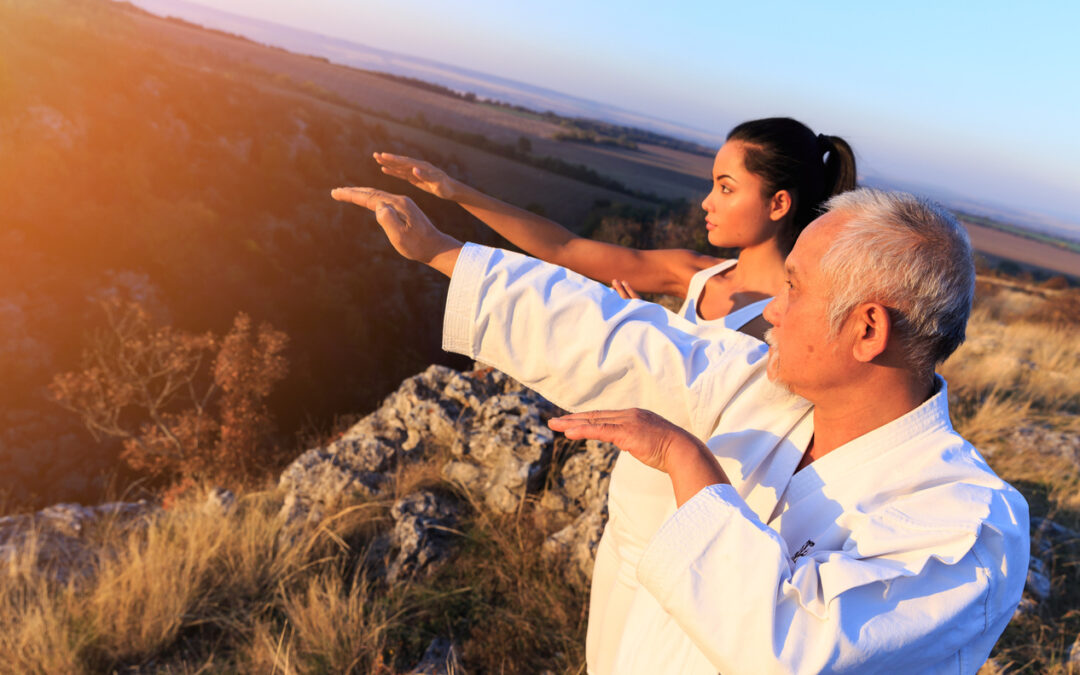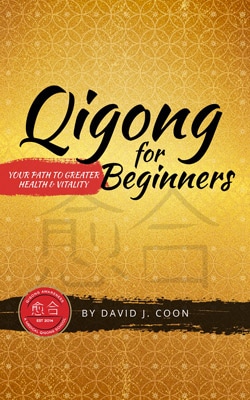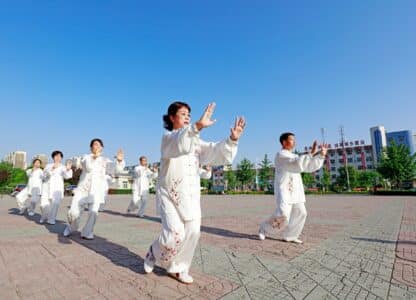How are Tai Chi and Qigong similar?
Many people ask: are Tai Chi and Qigong the same? If not, what makes them different? The simplest answer is that Tai Chi is a form of Qigong, just like spaghetti is a type of Italian food or kung fu is a type of martial art. Like Qigong, Tai Chi originated in ancient China. Both are moving meditations that integrate slow, deliberate movements with standing postures and breathing techniques. Both are low-impact exercises that help cultivate balance, alignment, and muscle control. And both have shared health benefits, like reduced stress and increased relaxation. Tai Chi is one of the most popular forms of Qigong around the world.
What makes them different?
In many ways, Tai Chi is closer to a martial art and is often considered to be one. Just like karate, for example, Tai Chi focuses on a set of specific postures or forms. The movements of Tai chi are softer and more circular than the harder, linear movements of many martial arts, but they nonetheless can be quite complex. On the other hand, Qigong is simpler and more free-form, focusing less on mastering specific forms and more on cultivating energy. There also tends to be more variance in Qigong, which is a highly adaptable practice.
Even though both Qigong and Tai Chi involve movement, Tai Chi usually emphasizes a continuous formal sequence, while Qigong tends to revolve around individual exercises. Because of this, Tai Chi often requires space to move around, whereas Qigong exercise can be done in a limited space.
Which one is better?</h2
Both Tai Chi and Qigong have tremendous benefits, beginning with a calmer mind and greater relaxation. This reduction of stress levels helps create a greater sense of harmony and leads to a longer, healthier life. Neither is better than the other—it just depends on what kind of class you are looking for! In fact, Tai Chi and Qigong are often practiced together. In a Tai Chi class, you’ll often spend half of the session focusing on one short or long-form, and the other half of the class either practicing Qigong or learning a breakdown of Tai Chi form. Many Tai Chi classes incorporate 10-30 minutes of Qigong.
Which is older, Tai Chi or Qigong?
It isn’t easy to trace an exact date for Qigong or Tai Chi’s origin because they were likely practiced long before any historical or written documentation. But, many people believe that Qigong has been practiced for over 4,000 years. Tai Chi is thought to have originated later, dating as far back as 1,500 years ago (and possibly more!).
What Is The Difference between “Qi” in Qigong and “Chi” Tai Chi?
Both “qi” in Qigong and “chi” in Tai Chi are pronounced “chee.” In English, you’ll often see them spelled as “qi” or “chi” interchangeably. Usually, when we talk about qi or chi, we are talking about energy or the universal life force that exists in all things. You might also have come across the word “ki,” which is a Korean word with a similar meaning of vigor or energy.
However, the original Chinese characters for Qigong and Tai Chi are a bit different. Tai Chi Chuan (the full name for Tai Chi) is often spelled with the characters 太極拳 (in traditional Chinese) whereas Tai Chi is usually written 太极 (in simplified Chinese). “Tai” means great, grand, or excellent, “Chi” means extremity or limit, and “Chuan” means “fist”—so together, it signals a physical form of ultimate excellence. It is also sometimes called “Shadowboxing” in English. Qigong is written with the Chinese characters 氣功, where “qi” means energy or spirit, and “gong” means cultivation or work, translating to “energy work.” These differences in name origin are telling of their different approaches—even though both exercises practice mindfulness and overlap with each other in many ways, Tai Chi can be thought to emphasize physical form, while Qigong focuses more on harnessing energy or life force.
What is the difference between Qi and Chi? There is no difference between Qi and Chi. In translating from Chinese to English, there are different versions. These are the two versions most used in the USA. They are pronounced the same “chee” whether it is spelled Qi or Chi. Both also have the same meaning of “energy,” no matter which version. If you have ever seen the word Ki, that also has the same meaning as Qi or Chi; however, the word Ki originates from Japan instead of China.
What about yoga? Does it have any similarities with Qigong or Tai Chi?
Because of its focus on meditation and movement, Qigong also has similarities to yoga from India. Some people even call Qigong “Chinese Yoga.” Though there are different kinds of Qigong and yoga, generally, yoga involves deep stretches, while Qigong involves milder stretches. Qigong and Tai Chi also generally focus on slower movements than in yoga and do not incorporate high-intensity movements or cardio exercise, while some kinds of yoga do. In this way, both Qigong and Tai Chi are accessible to people of a wide range of ages, physical challenges, and health conditions.
If you’d like to find out more, feel free to reach out to us with any questions. We’re happy to chat! You can also read our blog post Complete Guide to Qigong for Beginners.
David’s Video Discussing the Differences
See our YouTube channel for more video content.







